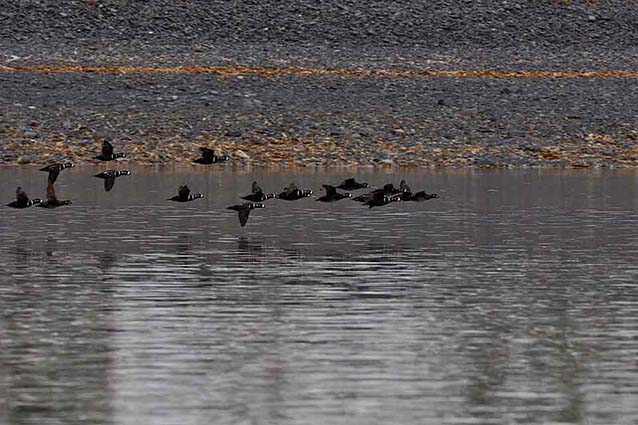
NPS/Jim Pfeiffenberger
Many marine birds rely heavily on habitats and prey associated with the marine nearshore ecosystem of park coastlines. These species are top-level consumers of fish and marine invertebrates, such as mussels, clams, snails, and limpets. Because of these characteristics, these birds are good indicators of change in the marine ecosystem. Monitoring focuses on birds that are trophically linked to the nearshore food web such as sea ducks (harlequins, Barrow’s goldeneye, mergansers, and scoters) and black oystercatchers as well as various guilds of other marine birds (e.g., pigeon guillemots, blacklegged kittiwakes, and cormorants) that occupy other food webs or habitats.
Monitoring these various guilds simultaneously improves our ability to discriminate among potential causes of change in seabird populations and the nearshore ecosystem. For example, some of the species we monitor were impacted by the Exxon Valdez oil spill, and exhibited protracted recovery periods as a consequence of lingering oil in nearshore habitats. Public concern exists for the welfare of marine birds because they are currently affected by human activities like pollution and commercial fishing.
Methods
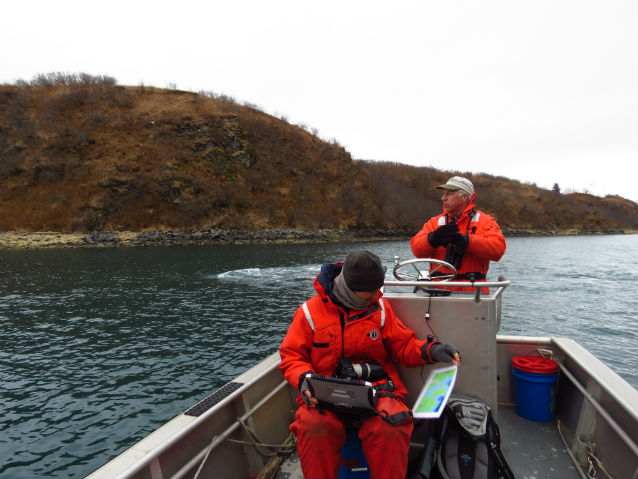
NPS/E.Kunisch
In Katmai National Park and Preserve (NPP) and Kenai Fjords National Park (NP), ecologists conduct shoreline skiff-based surveys along coastal (nearshore) habitats. We collect data that provides baseline information on species composition, distribution, and density for populations of marine bird and mammals that occur in the nearshore waters of Katmai NPP and Kenai Fjords NP.
Summer surveys are conducted annually and winter surveys are conducted in each park in alternate years as weather permits. Marine bird surveys have been conducted in Katmai NPP and Kenai Fjords NP since 2006 and 2007, respectively.
Findings
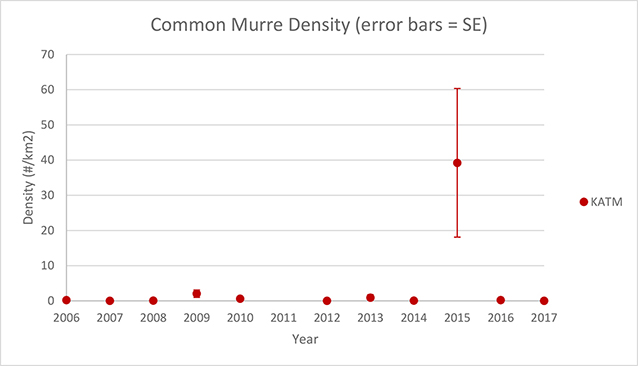
Skiff-based marine bird and mammal surveys along coastal (nearshore) transects have been conducted annually in Katmai National Park and Preserve since 2006 (with the exception of 2011) and annually in Kenai Fjords National Park since 2007. During the summer of 2015, we observed large increases in common murres relative to previous years. This increase was particularly evident in Katmai (Figure 1).
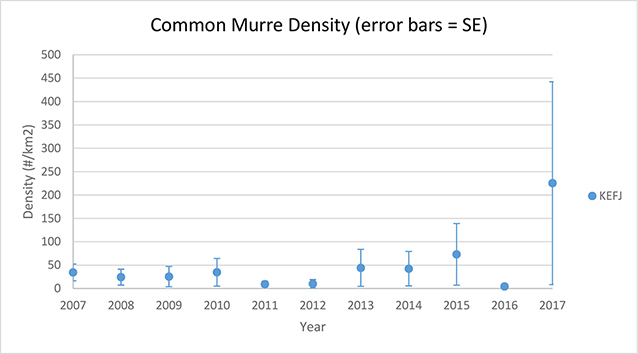
Kenai Fjords National Park does have common murre colonies, however, we observed an increase of these birds moving into coastal areas not associated with colonies (Figure 2).
Our documentation of unusual murre distributions corresponded to observations of large die-offs of murres throughout the north Pacific in the winter of 2015-2016. We speculate that warmer water temperatures may have disrupted prey abundance or availability, leading to changes in murre distribution, behavior, condition, and mortality rates. Our results contributed to other observations that 2015 was an anomalous year. Common murre density and distribution returned to normal in 2016 and has continued through 2017. Observations from Kenai Fjords National Park in 2017 were slightly lower than expected, but many transects near colonies were not surveyed due to inclement weather.
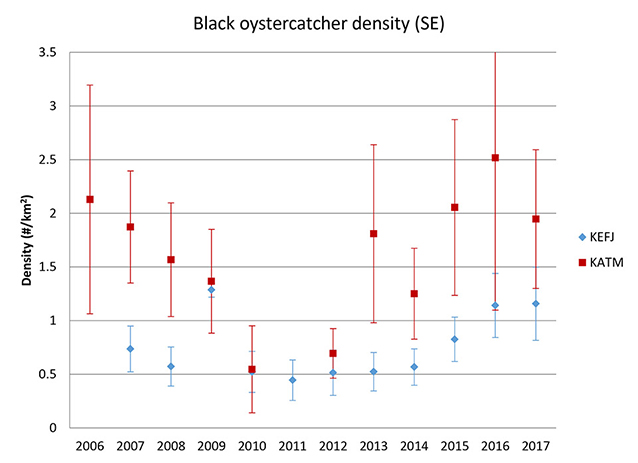
For More Information
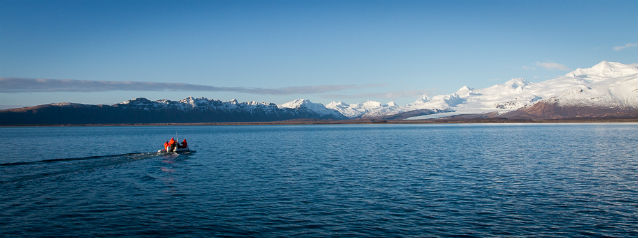
NPS/J. Walton
Contact, Heather Coletti: heather_coletti@nps.gov
https://science.nature.nps.gov/im/units/swan/monitor/nearshore.cfm
http://www.gulfwatchalaska.org/
Click here to print a copy of this article.
Updated March 2018
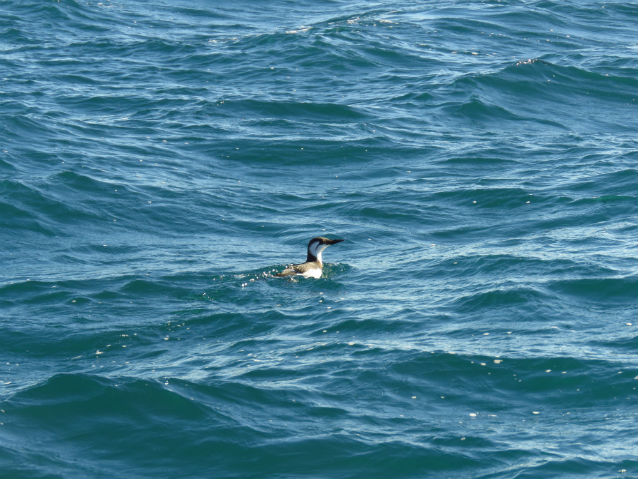
NPS/E. Kunisch

Tags
- katmai national park & preserve
- kenai fjords national park
- southwest alaska im network
- usgs
- gulfwatch alaska
- usfws
- common murre
- noaa
- seabird monitoring
- marine mammals
- alaska
- ocean alaska science and learning center
- oaslc
- resource brief
- 2016
- southwest alaska network
- marine birds
- black oystercatcher
- ak1
Last updated: October 26, 2021
